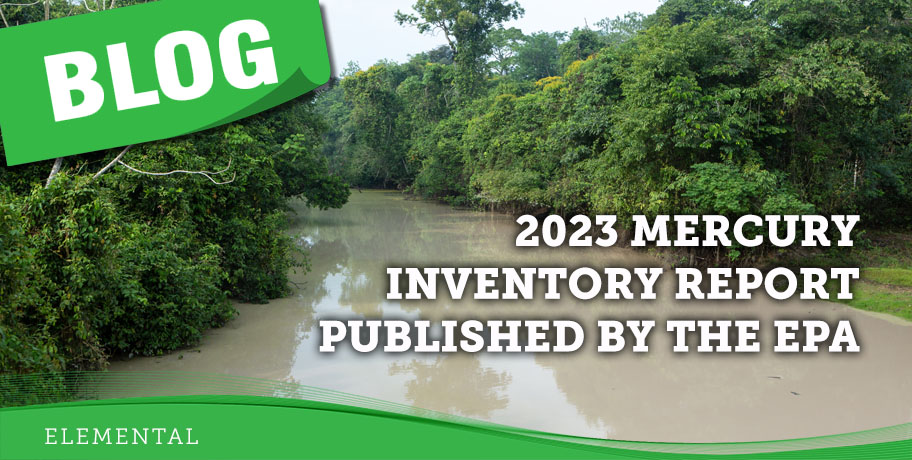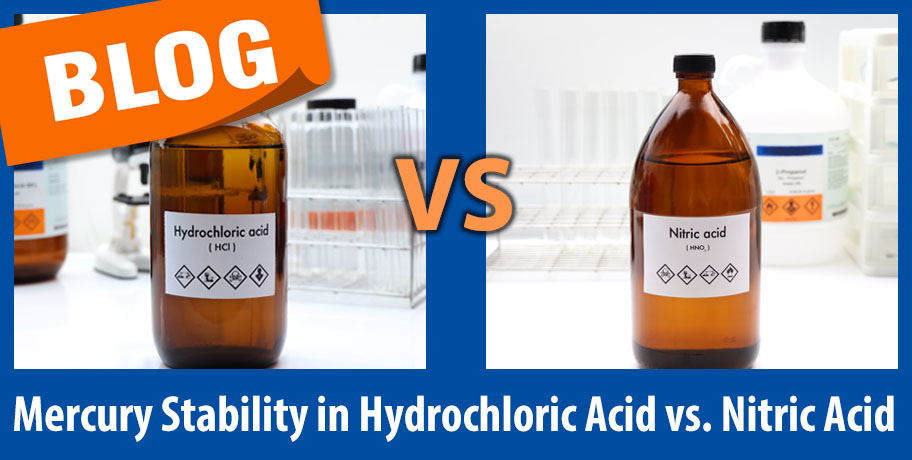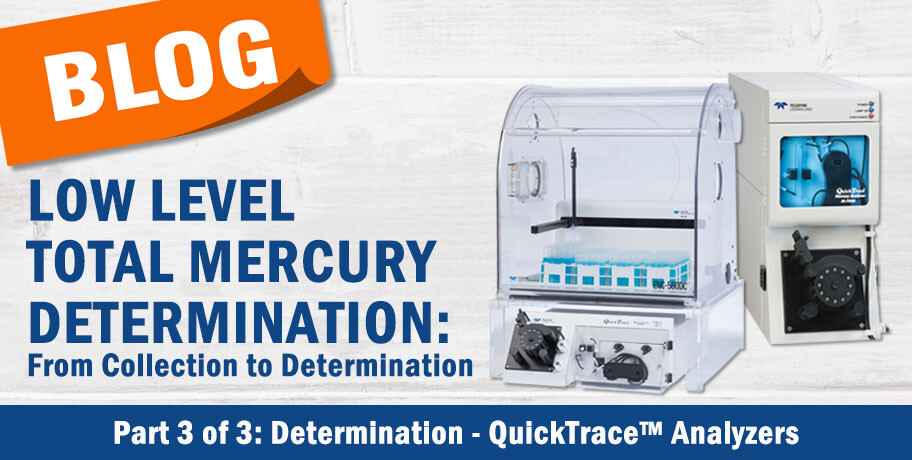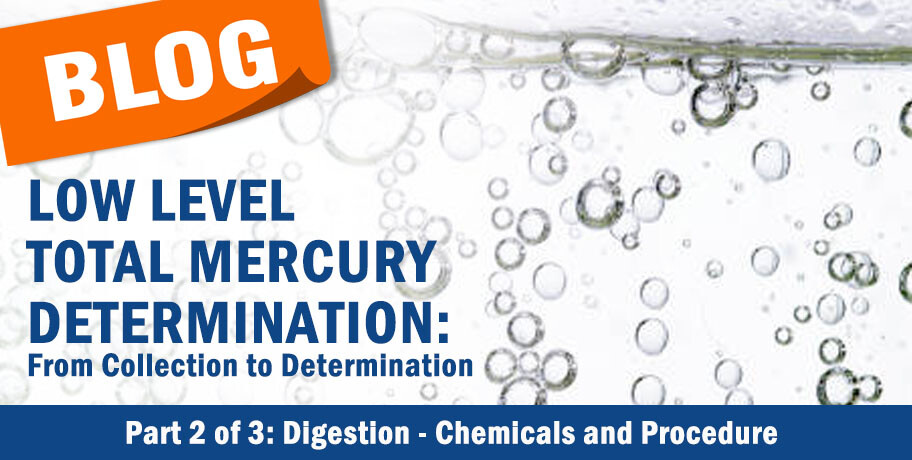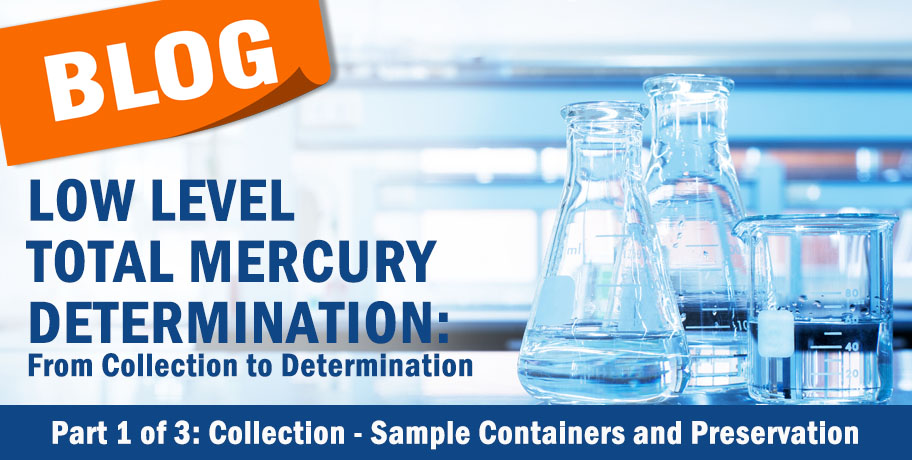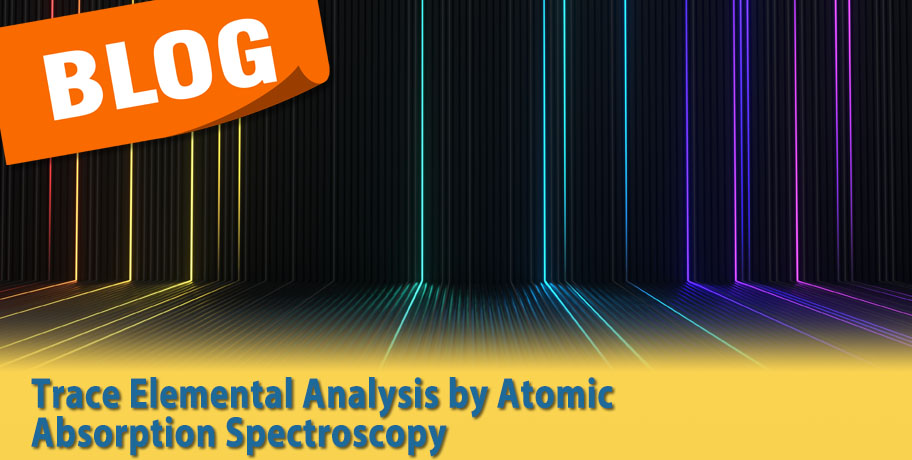Mercury is a persistent, global, and toxic element. It does not degrade, but it changes forms as it cycles through the environment. When mercury is emitted, it can be transported over long distances and re-deposited.
Read MoreTeledyne Leeman Labs Blog
Tags: Hg analysis, mercury, hg
Mercury Stability in Hydrochloric Acid vs. Nitric Acid
Posted by Sara Kennedy on Jan 5, 2024 1:51:10 PM
Teledyne Leeman Labs has been in the mercury (Hg) analysis business for more than 30 years. We have had a variety of product lines reach new markets and address tighter regulations. In that time, one thing has remained constant across all our instruments: the need for accurate mercury standards to form the building blocks of the calibration curve. Analytical results are only as reliable as the calibration curve to which they are compared, and creating stable mercury standards comes with unique challenges.
Read MoreTags: Teledyne Leeman Labs, Hg analysis, mercury, mercury analysis, QuickTrace, hg
Low-Level Total Mercury Determination: From Collection to Determination - Part 3: Determination
Posted by Sara Kennedy on Aug 29, 2023 3:59:15 PM
Teledyne Leeman Labs offers multiple mercury (Hg) analyzers which can determine total mercury concentrations in samples at the ultra-trace level. The final installment of this three-part blog series will be an introduction to the QuickTrace line of mercury analyzers: the QuickTrace M-7600 and the QuickTrace M-8000.
Read MoreTags: Teledyne Leeman Labs, Hg analysis, mercury, hg
Low-Level Total Mercury Determination: From Collection to Determination: Part 2 - Digestion: Chemicals and Procedure
Posted by Sara Kennedy on Aug 4, 2023 1:39:39 PM
In Part 1 of this series, sample collection, container types, and preservation techniques for low-level total mercury (Hg) analysis were discussed. In Part 2, I will highlight contamination sources from chemicals and the potential for analyte loss associated with digestion protocols.
Read MoreLow Level Total Mercury Determination: From Collection to Determination
Posted by Sara Kennedy on Jul 28, 2023 1:27:22 PM
Mercury (Hg) determination at the ultra-trace level is an essential part of environmental assessment and drinking water monitoring. But this type of analysis comes with distinct challenges.
Read MoreTags: Hg analysis, low level mercury, mercury, mercury analysis, Determination of Trace Elements
Going for the Gold: Benefits of a Gold Trap in Mercury Analysis
Posted by Aaron Keller on Jul 25, 2023 12:05:30 PM
The gold standard. Go for the gold. A gold medal.
Gold is highly prized for its beauty, as a measure of wealth, a jewelry mainstay and more. When it comes to the analysis of mercury, gold has a very particular value in obtaining data at the ultra-trace level.
Read MoreTags: Hg analysis, mercury analysis, QuickTrace, gold
Trace Elemental Analysis by Atomic Absorption Spectroscopy
Posted by Sara Kennedy on Jan 23, 2023 4:17:03 PM
Trace elemental analysis
Teledyne Leeman Labs has specialized in trace elemental analysis for over 40 years. With initial success in Inductively Coupled Plasma-Atomic Emission Spectroscopy (ICP-AES), also referred to as Inductively Coupled Plasma-Optical Emission Spectroscopy (ICP-OES), Teledyne Leeman Labs went on to develop innovative product lines. Those included branching out into various elemental analysis techniques, including DC Arc and Mercury Analysis. Our elemental analysis instruments can be found in laboratories across the world, providing service to a range of industries. From agriculture to aerospace and food to forensics, Teledyne Leeman Labs is dedicated to providing world-class instruments for trace elemental analysis.
Figure 1: Atomic Spectra for mercury (Hg), Copyright © Richard Pogge, All Rights Reserved
Atomic absorption spectroscopy
Atomic absorption spectroscopy (AAS) is one of the first commercially available elemental analysis techniques. This tried-and-true method remains a top choice for its simplicity and reliability.
Read MoreTags: Hg analysis, Atomic Spectroscopy
Mercury Determination in Tuna – a Thorough Analysis
Posted by Betsey Seibel on Jan 24, 2017 9:00:00 AM
The proliferation of mercury in fish is a well-documented environmental problem. Mercury accumulates in fish tissue from natural and anthropogenic source in bodies of water where the fish live. The microorganisms at the base of the aquatic food change convert the elemental mercury into organic methylmercury, which binds tightly to the proteins in fish tissue.
Read MoreTags: Hg analysis
Could Remediated Ammo Manufacturing Site in Ohio be New Home to Luxury Apartments?
Posted by Betsey Seibel on Sep 27, 2016 2:43:48 PM
An abandoned ammo factory in Kings Mill, Ohio is on the EPA list as one of the most contaminated sites in the country. The site, once home to the Peter’s Cartridge Company, could be the new home to luxury apartments and commercial office space overseeing the Little Miami River. The $25 million plan, which includes 120-130 apartments and 23,000 square feet of commercial space, is dependent on whether the site can be remediated from the mercury, copper and lead that has contaminated the soil for more than a century.
Read More
Tags: Hg analysis
Soil and dust in homes often become the primary resting places for environmental toxins such as metals and metalloids that come from vehicle traffic and a variety of industrial sources. Residents within urban settings have a higher rate of exposure to contaminated dust from inhalation, ingestion and dermal contact. As a result, dust ingestion is often regarded as the primary source of low-dose mercury in urban children who spend much of their time indoors.
Read More
Tags: Hg analysis

